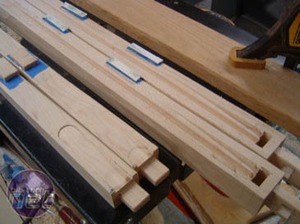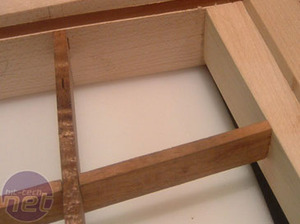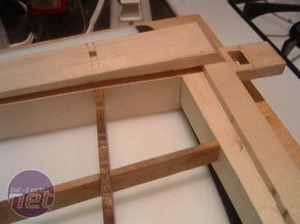
Koa
Hawaiian curly koa would become one of the main features of Yuugou, and rightly so, given that its one of the most beautiful woods in the world. Even without finish, you can see how beautiful the wood really is -- but the depth of the wood really comes out later once I put the finish on.The router table would become useful again here as I had to make the maple and koa seamlessly fit together. In order to do this, I had to first route a diagonal rabbet joint out of the koa to get around the bend in the maple piece. It’s a little hard to visualize, but the pictures help.
For the koa itself, a simple jigsaw was used for the rough curve and then a plywood template along the router table to smooth everything out and ensure uniformity amongst both sides. Once these pieces were done, I decided to start sanding the frame to really give it the soft feeling I was going for.




Koa Bending
Making the curved koa pieces was a fairly difficult process, mostly because koa does not like to be bent and I ended up redoing half of the pieces because they broke.





The next step is the curved koa pieces on the top of the case. First I laid everything out, then made the half lapped joints in the koa, then marked and cut the mortise and tenons to mate the koa and maple.





MSI MPG Velox 100R Chassis Review
October 14 2021 | 15:04








Want to comment? Please log in.